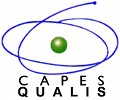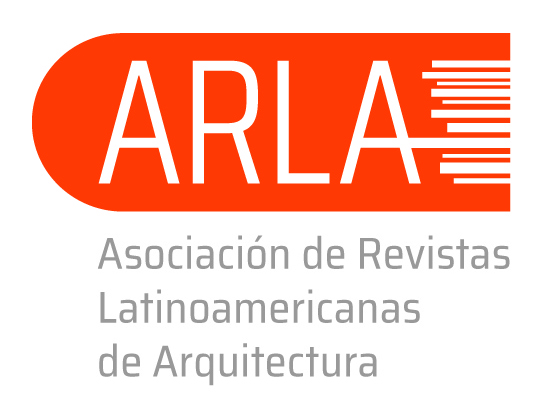A common dream
. Rehabilitation plan for the former Pelícana train station. Valle del Elqui, Chile
DOI:
https://doi.org/10.14409/ar.v12i22.11828Keywords:
architectural rehabilitation; earthen construction; deterioration in buildings; communal spaces; railway stationAbstract
The former Pelícana train station is a earthen building that is located in the town of Pelícana in Valle del Elqui. Within the framework of a master's degree research and thanks to the research project Semilla Dicyt No 092090MP_ARQ of the Universidad de Santiago de Chile - Usach, it was raised to carry out a proposal for the rehabilitation of this abandoned space, revaluing it and putting it at the service of the needs of the sector. The study carried out responded to the characteristics of a projective type investigation, whose study events were: architectural deterioration and the needs of communal space. Research instruments were applied for the critical diagnosis of pathologies of the property and for the knowledge of the needs of common spaces by the local population, results analyzed with qualitative and quantitative techniques, respectively. Based on these preliminary results, the rehabilitation proposal was designed, which includes programs for sports, study, walking and meeting spaces. The investigation concludes in the development of an architectural rehabilitation plan for a building rooted in the sensitivity, history and identity of a locality, which has been consulted about its needs and interests in terms of the rehabilitation of this space, it is a plan that has highly gained feasibility, permanence and validity over time, which would guarantee the permanence of the implicit architectural values in the building.
References
Albelo, J. (2017). Los criterios de restauración de Viollet–le–Duc, Ruskin y Boito. Croma Cultura. https://www.cromacultura.com/restauracion-viollet-le-duc-ruskin-boito/
Araya, R.; La Paz, C.; Canihuante, G.; Portilla, P.; Toro, A.; Guerra, C. y Muñoz, C. (2020). Memoria y olvido: al rescate del patrimonio a través del lente.14. https://www.museohistoricolaserena.gob.cl/sites/www.museohistoricolaserena.gob. cl/files/images/articles-95296_archivo_01.pdf
Guillén, P. (2015). Arquitectura de Tierra. Limitaciones constructivas. Issuu. https://issuu.com/winog.marzal/docs/guill__n_marzal_pablo_arquitectura_Hernández. (2016). Construcción con tierra: Análisis, conservación y mejora. Un caso práctico en Senegal. https://upcommons.upc.edu/handle/2117/107822
Hurtado, J. (2000). Metodología de la Investigación Holística. Fundación Sypal.
INN (2013). Estructuras - Intervención de construcciones patrimoniales de tierra cruda -Requisitos del proyecto estructural. eCommerce INN. 25 de octubre de 2013, NCh3332. https://ecommerce.inn.cl/nch3332201345840
Lacoste, P.; Premat, E. y Bulo, V. (2014). Tierra cruda y formas de habitar el reino de Chile. Universum, 29(1), 85–106. https://doi.org/10.4067/S0718-23762014000100005
Lamas, C. y Olivares, V. (2021). Deterioro y riesgo de desaparición del patrimonio ferroviario del Ramal La Serena – Rivadavia, Región de Coquimbo, Chile. [Tesis de Pregrado, Universidad de La Serena]
Ministerio de Educación, Cultura y Deporte de España (2017). Proyecto COREMANS. Criterios de intervención en la arquitectura de tierra. https://www.activatie.org/publicacion?743–Proyecto–COREMANS.–Criterios–de–intervención-en-la-arquitectura-de-tierra
Morilla, E. y Fermín, C. (2015). La apropiación del patrimonio vernáculo. Arquitectura Vernácula Dominicana. https://arquitecturavernaculadominicana.wordpress.com/2015/12/13/la-apropiacion-del-patrimonio-vernaculo
Published
How to Cite
Issue
Section
License
Copyright (c) 2022 ARQUISUR

This work is licensed under a Creative Commons Attribution-NonCommercial-NoDerivatives 4.0 International License.
ACCESO ABIERTO
ARQUISUR Revista es una publicación de acceso abierto y sin ánimo de lucro. No se imputan cargos por la recepción, revisión, evaluación, publicación ni acceso a sus contenidos. Se distribuye bajo una Licencia Creative Commons CC Atribución-NoComercial-SinDerivadas 4.0 Internacional (CC BY-NC-ND 4.0): No se permite un uso comercial de la obra original ni la generación de obras derivadas. Esta licencia no es una licencia libre, y es la más cercana al derecho de autor tradicional.
DESCARGO
Los criterios expuestos en los artículos son de exclusiva responsabilidad de sus autores y no reflejan necesariamente la opinión del Comité Editorial ni de la Dirección Editorial Técnica. Los derechos de los artículos publicados pertenecen a sus autores o editoriales. Los autores ceden sus derechos de publicación al Centro de Ediciones de la Universidad Nacional del Litoral de Santa Fe, Argentina.














